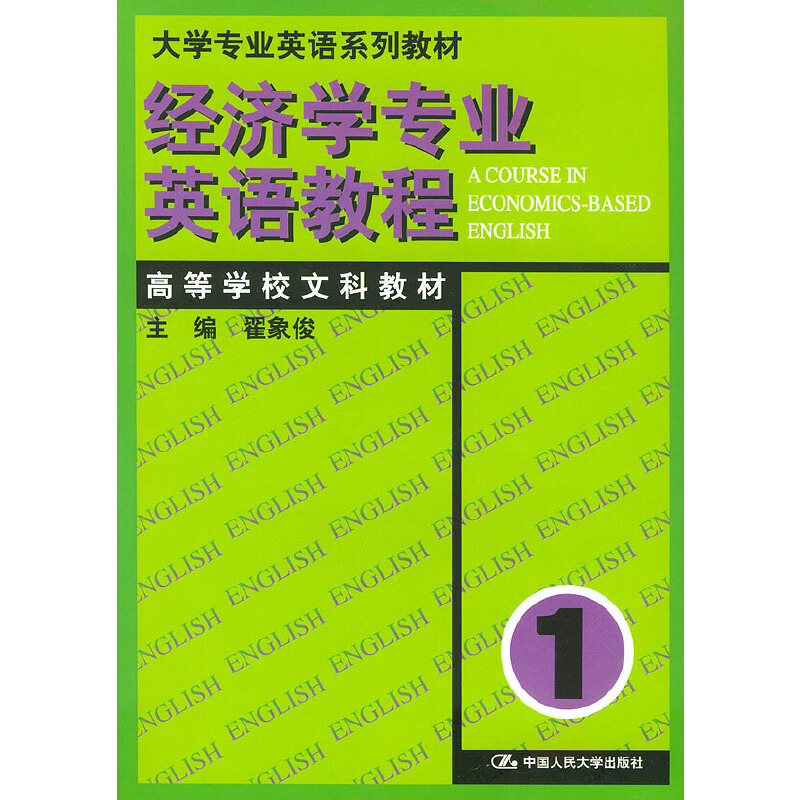材料手册8 气体 液体 / Springer手册精选原版系列
¥68.00定价
作者: [美]卡达雷利
出版时间:2014-04
出版社:哈尔滨工业大学出版社
- 哈尔滨工业大学出版社
- 9787560344546
- 112918
- 2014-04
- TB3-62
内容简介
卡达雷利主编的《材料手册》第二版提供所有类别的材料的物理和化学性质,是一本简洁的手边工具书。第二版与第一版的差别是扩大新的家庭用的材料,但重点是每一类常见的工业材料的性能。《材料手册(8气体液体)》一书内容为原手册第19、20章气体和液体的介绍。
目录
Introduction
19 Gases
19.1 Properties of Gases
19.1.1 Pressure
19.1.2 The Boyle-Mariotte Law
19.1.3 Charles and Gay-Lussac's Law
19.1.4 The Avogadro-Ampere Law
19.1.5 Normal and Standard Conditions
19.1.6 Equation of State of Ideal Gases
19.1.7 Dalton's Law of Partial Pressure
19.1.8 Equations of State of Real Gases
19.1.8.1 Van der Waals Equation of State
19.1.8.2 Virial Equation of State
19.1.9 Density and Specific Gravity of Gases
19.1.10 Barometric Equation
19.1.11 Isobaric Coefficient of Cubic Expansion
19.1.12 Compressibility Factor
19.1.13 Isotherms of Real Gases and Critical Constants
19.1.14 Critical Parameters
19.1.15 The Principle of Corresponding States
19.1.16 Microscopic Properties of Gas Molecules
19.1.17 Molar and Specific Heat Capacities
19.1.18 Dynamic and Kinematic Viscosities
19.1.19 Solubility of Gases in Liquids
19.1.20 Gas Permeability of Polymers
19.1.21 Dielectric Properties of Gases, Permittivity and Breakdown Voltage
19.1.22 Psychrometry and Hygrometry
19.1.23 Vapor Pressure
19.1.23.1 Absolute Humidity or Humidity Ratio
19.1.23.2 Mass Fraction of Water Vapor or Specific Humidity
19.1.23.3 Relative Humidity
19.1.23.4 Humid Heat
19.1.23.5 Humid or Specific Volume
19.1.23.6 Dry-Bulb Temperature
19.1.23.7 Wet-Bulb Temperature
19.1.23.8 Wet-Bulb Depression
19.1.23.9 Dew Point Temperature
19.1.23.10 Specific Enthalpy
19.1.23.11 Latent Heat of Fusion
19.1.23.12 Latent Heat of Vaporization
19.1.23.13 Refractivity of Moist Air
19.1.23.14 Psychrometric Charts
19.1.23.15 Psychrometric Equations
19.1.24 Flammability of Gases and Vapors
19.1.24.1 Flammability Limits
19.1.24.2 Explosive Limits
19.1.24.3 Autoignition Temperature
19.1.24.4 Ignition Energy
19.1.24.5 Maximum Explosion Pressure
19.1.24.6 Maximum Rate of Pressure Rise
19.1.24.7 High and Low Heating Values
19.1.25 Toxicity of Gases and Threshold Limit Averages
19.2 Physico-Chemical Properties of Major Gases
19.3 Monographxes on Major Industrxal Gases
19.3.1 Air
19.3.2 Nitrogen
19.3.3 Oxygen
19.3.4 Hydrogen
19.3.5 Methane
19.3.6 Carbon Monoxide
19.3.7 Carbon Dioxide
19.3.8 Helium and Noble Gases
19.3.8.1 Neon
19.3.8.2 Argon
19.3.8.3 Krypton
19.3.8.4 Xenon
19.3.8.5 Radon
19.4 Halocarbons
19.5 Hydrates of Gases and Clathrates
19.6 Materials for Drying and Purifying Gases
19.6.1 Drying Agents and Dessicants
19.6.2 Molecular Sieves
19.6.3 Getters and Scavengers
19.7 Producers and Manufacturers of Major Industrial Gases
19.8 Further Reading
20 Liquids
20.1 Properties of Liquids
20.1.1 Density and Specific Gravity
20.1.2 Hydrometer Scales
20.1.3 Dynamic and Kinematic Viscosities
20.1.3.1 Shear Stress
20.1.3.2 Shear Rate
20.1.3.3 Absolute or Dynamic Viscosity
20.1.3.4 Kinematic Viscosity
20.1.3.5 Temperature Dependence of the Dynamic Viscosity
20.1.4 Classification of Fluids
20.1.5 The Hagen-Poiseuille Equation and Pressure Losses
20.1.5.1 Pressure Drop
20.1.5.2 Friction Losses
20.1.6 Sedimentation and Free settling
20.1.7 Vapor Pressure
20.1.8 Surface Tension, Wetting and Capillarity
20.1.8.1 Surface Tension
20.1.8.2 Temperature Dependence and Order of Magnitude of Surface Tension
20.1.8.3 Parachor and Walden's Rule
20.1.8.4 Wetting
20.1.8.5 Contact Angle
20.1.8.6 Young's Equation
20.1.8.7 Work of Cohesion, Work of Adhesion and Spreading Coefficient
20.1.8.8 Two Liquids and a Solid
20.1.8.9 Antonoffs Rule
19 Gases
19.1 Properties of Gases
19.1.1 Pressure
19.1.2 The Boyle-Mariotte Law
19.1.3 Charles and Gay-Lussac's Law
19.1.4 The Avogadro-Ampere Law
19.1.5 Normal and Standard Conditions
19.1.6 Equation of State of Ideal Gases
19.1.7 Dalton's Law of Partial Pressure
19.1.8 Equations of State of Real Gases
19.1.8.1 Van der Waals Equation of State
19.1.8.2 Virial Equation of State
19.1.9 Density and Specific Gravity of Gases
19.1.10 Barometric Equation
19.1.11 Isobaric Coefficient of Cubic Expansion
19.1.12 Compressibility Factor
19.1.13 Isotherms of Real Gases and Critical Constants
19.1.14 Critical Parameters
19.1.15 The Principle of Corresponding States
19.1.16 Microscopic Properties of Gas Molecules
19.1.17 Molar and Specific Heat Capacities
19.1.18 Dynamic and Kinematic Viscosities
19.1.19 Solubility of Gases in Liquids
19.1.20 Gas Permeability of Polymers
19.1.21 Dielectric Properties of Gases, Permittivity and Breakdown Voltage
19.1.22 Psychrometry and Hygrometry
19.1.23 Vapor Pressure
19.1.23.1 Absolute Humidity or Humidity Ratio
19.1.23.2 Mass Fraction of Water Vapor or Specific Humidity
19.1.23.3 Relative Humidity
19.1.23.4 Humid Heat
19.1.23.5 Humid or Specific Volume
19.1.23.6 Dry-Bulb Temperature
19.1.23.7 Wet-Bulb Temperature
19.1.23.8 Wet-Bulb Depression
19.1.23.9 Dew Point Temperature
19.1.23.10 Specific Enthalpy
19.1.23.11 Latent Heat of Fusion
19.1.23.12 Latent Heat of Vaporization
19.1.23.13 Refractivity of Moist Air
19.1.23.14 Psychrometric Charts
19.1.23.15 Psychrometric Equations
19.1.24 Flammability of Gases and Vapors
19.1.24.1 Flammability Limits
19.1.24.2 Explosive Limits
19.1.24.3 Autoignition Temperature
19.1.24.4 Ignition Energy
19.1.24.5 Maximum Explosion Pressure
19.1.24.6 Maximum Rate of Pressure Rise
19.1.24.7 High and Low Heating Values
19.1.25 Toxicity of Gases and Threshold Limit Averages
19.2 Physico-Chemical Properties of Major Gases
19.3 Monographxes on Major Industrxal Gases
19.3.1 Air
19.3.2 Nitrogen
19.3.3 Oxygen
19.3.4 Hydrogen
19.3.5 Methane
19.3.6 Carbon Monoxide
19.3.7 Carbon Dioxide
19.3.8 Helium and Noble Gases
19.3.8.1 Neon
19.3.8.2 Argon
19.3.8.3 Krypton
19.3.8.4 Xenon
19.3.8.5 Radon
19.4 Halocarbons
19.5 Hydrates of Gases and Clathrates
19.6 Materials for Drying and Purifying Gases
19.6.1 Drying Agents and Dessicants
19.6.2 Molecular Sieves
19.6.3 Getters and Scavengers
19.7 Producers and Manufacturers of Major Industrial Gases
19.8 Further Reading
20 Liquids
20.1 Properties of Liquids
20.1.1 Density and Specific Gravity
20.1.2 Hydrometer Scales
20.1.3 Dynamic and Kinematic Viscosities
20.1.3.1 Shear Stress
20.1.3.2 Shear Rate
20.1.3.3 Absolute or Dynamic Viscosity
20.1.3.4 Kinematic Viscosity
20.1.3.5 Temperature Dependence of the Dynamic Viscosity
20.1.4 Classification of Fluids
20.1.5 The Hagen-Poiseuille Equation and Pressure Losses
20.1.5.1 Pressure Drop
20.1.5.2 Friction Losses
20.1.6 Sedimentation and Free settling
20.1.7 Vapor Pressure
20.1.8 Surface Tension, Wetting and Capillarity
20.1.8.1 Surface Tension
20.1.8.2 Temperature Dependence and Order of Magnitude of Surface Tension
20.1.8.3 Parachor and Walden's Rule
20.1.8.4 Wetting
20.1.8.5 Contact Angle
20.1.8.6 Young's Equation
20.1.8.7 Work of Cohesion, Work of Adhesion and Spreading Coefficient
20.1.8.8 Two Liquids and a Solid
20.1.8.9 Antonoffs Rule




